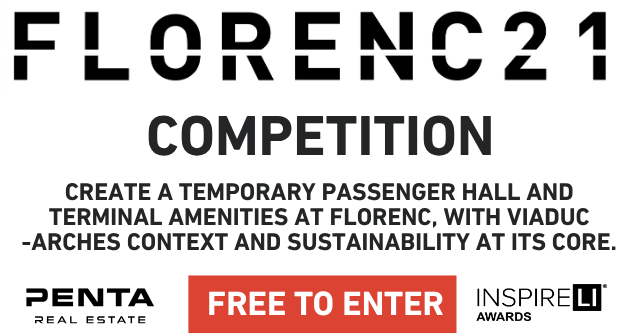Wine on rock
Idea projektu
Dizajn je inšpirovaný okolitou krajinou, kde vinice Zumberg vytvárajú jedinečný, organicky sa vyvíjajúci vzor. Každá parcela má inú orientáciu, ktorú formuje slnko a terén. Táto rozmanitosť sa odráža v priestorovom koncepte vinárstva: lineárne objemy sú umiestnené kolmo na rady viníc, čím vytvárajú dialóg s miestnym kontextom a zároveň sa prirodzene otvárajú smerom do krajiny. Architektúra sa nevnucuje, ale rozširuje rytmus a topografiu vinohradu, čím vzniká plynulá integrácia budovy a prírody
Popis projektu
Z terénu vychádzajú dva zväzky - jeden venovaný návštevníkom, druhý výrobe vína. Hoci sú vizuálne odlišné, v podzemí sa spájajú v centrálnom bode, kde hostia získajú priamy vizuálny prístup k výrobnému procesu. Tento moment transparentnosti sa stáva priestorom stretnutia, ktorý ponúka prehliadky, ochutnávky a autentické spojenie s výrobou vína. Funkčné zóny - reštaurácia, ubytovanie, výroba a administratíva - sú usporiadané do jasne definovaných blokov, ktoré sledujú sieť vinohradov, čo umožňuje flexibilnú prevádzku a zároveň zabezpečuje silný vzťah medzi architektúrou, vínom a krajinou. Exteriér reštaurácie je z oboch strán objatý vinohradmi, čo prirodzene formuje rôzne verejné a súkromnejšie zóny, z ktorých každá má svoju vlastnú jedinečnú atmosféru. Reštaurácia plynule prechádza do vonkajšej terasy, ktorá ponúka priestory na posedenie, ochutnávku vína alebo živú hudbu, čím sa exteriér stáva skutočným pokračovaním interiéru a živým miestom stretnutí. Medzi radmi viníc sa nachádzajú menšie, intímnejšie miesta, ktoré umožňujú návštevníkom ocitnúť sa priamo vo viniči. Počas oddychu alebo ochutnávky vína môžu hostia ochutnať samotné hrozno, z ktorého sa vyrába miestne víno, čím sa vytvára hlbšie zmyslové spojenie s miestom a procesom výroby vína.
Technické informácie
Vzhľadom na lineárnosť budov bol pre návrh zvolený železobetónový konštrukčný systém s pozdĺžnymi nosnými stenami. Celková hrúbka zateplených obvodových stien je 400 mm. Všetky stropné konštrukcie tvoria železobetónové dosky s hrúbkou 250 mm a strešné vrstvy sú navrhnuté ako extenzívna zelená strecha. V oblastiach s veľkými presklenými plochami je pevná stena nahradená štíhlym konštrukčným rámom so štíhlymi kovovými stĺpmi, ktoré vertikálne rozdeľujú fasádu a zároveň zachovávajú otvorené vizuálne prepojenie s okolitou krajinou. Nosné obvodové steny sú od seba vzdialené 10 m. V časti pre návštevníkov je tento modul doplnený treťou, centrálnou nosnou stenou, ktorá tiež pomáha definovať vnútorné usporiadanie. Vo výrobnej časti sú 10-metrové rozpätia premostené pomocou predpätých betónových panelov Spiroll, čo umožňuje vytvoriť otvorený priestor bez stĺpov. Tienenie zasklených fasád obrátených k slnku zabezpečujú sklopné okenice z perforovaných panelov z korutánskej ocele. Keď sú zatvorené, poskytujú ochranu pred slnkom; keď sú otvorené, fungujú ako tieniace prvky alebo ochranné zábradlia pred otvárateľnými oknami. Z hľadiska materiálového riešenia sa v návrhu kladie dôraz na kombináciu prírodných a odolných materiálov. Dominantným prvkom je pieskovo sfarbený pohľadový betón, doplnený cortenovými detailmi a akcentmi z hliníkového plechu. Spoločne vytvárajú tlmenú, autentickú paletu materiálov, ktorá harmonizuje s vinohradníckou krajinou a odráža nadčasovú a zvetranú estetiku budovy.
Projekt odovzdaný
23. 05. 2025Štítok
Rady študentom


